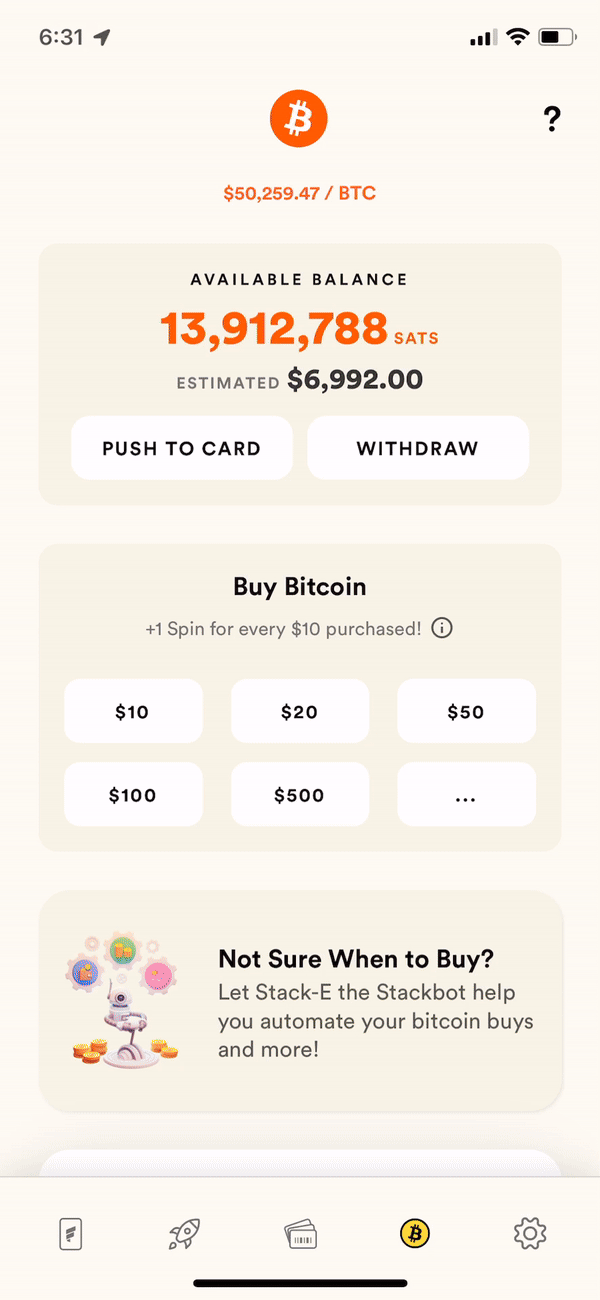

How to #GetOnZero and fully upgrade your money—today.
“If you understand the why, you can go through any how”.
In The Zero Dollar Manifesto: Part 1, we talked about what upgrading your money means, why you’d want to hold zero dollars, and how to rethink the function of dollars as a payment rail to move bitcoin. To execute this vision, we need the right tools for the job.
While there aren't any perfect products out there yet, there are tools to get the job done. Where there’s a will, there’s a way. In Part 2 of this series, we’ll take a look at the tools that I personally have used for the last two tax years to GetOnZero and fully upgrade my money. These are your best tools today, but software is ever-changing. Things will only get better from here.
Because no tool has full automation as of the writing of this article, my Strong Money tooling stack currently involves a little bit of manual effort–well worth it for me in order to avoid monetary debasement. As you earn income in dollars (hitting your bank account), you can pay off bills for the month (credit card, car payment, rent) and buy bitcoin with the rest. If expenses exceed income in that month (eg. have a large purchase, down payment), simply sell bitcoin to have enough Weak Money to quickly send away.
Note that there’s definitely additional friction with this Stack, today. There are periods where I’m exposed to Weak Money for longer than I’d like, and I’m doing a good amount of manual math. That said, these are all solvable problems, and the tools are already improving at a rapid pace.

Having access to an account & routing number is critical to be able to send & receive Weak Money (dollars). Whatever dollars are left after paying bills, you send to your bitcoin exchange to convert to Strong Money (getting you on zero dollars).
Tools: Fold (non-ref link), Cash App (non-ref link), Ally Bank.: Fold and Cash App both have full access to Account & Routing numbers, right alongside their bitcoin financial services. Ally Bank is more of a traditional ACH node (checking account).

Unsurprisingly, there must be a way to convert Weak Money into Strong Money and vice versa, and the bitcoin exchange serves that purpose today. Any excess dollars you have after paying bills, you buy bitcoin with. If you ever have bills to pay that exceed income, sell bitcoin to your ACH node.
Since we convert frequently, look for an exchange with zero fees and the lowest spread possible. For a list of services with their fees, see btcpricetool.com
Tools: Fold (non-ref link), Strike (non-ref link), Cash App (Direct deposit) (non-ref link)

While not a requirement by any means, responsible use of credit cards streamline the Strong Money experience, until more tools add automated conversion features. Instead of manually selling bitcoin every time you want to spend, spending on credit allows batch selling once a month.
Either pay the bill as your income comes in, or sell bitcoin from your bitcoin exchange to pay the bill from your ACH node.
If your bitcoin exchange (i.e. Strong Money bank) issues a debit card that automatically pulls from your bitcoin balance, that’s a great solution as well.
Tools: Traditional credit cards, Fold debit card (non-ref link)

(This is not financial advice, talk to your accountant. This is from a United States POV.)
In the United States, because bitcoin is treated as a commodity and not currency, any purchasing power gains (measured in dollars) may be subject to capital gains tax.
This should not be a deterrent to upgrading your money, at all. You are only subject to this tax if you come out ahead (measured in dollars). If you were sitting in Weak Money (dollars), you wouldn’t be subject to the tax, but you also wouldn’t be protecting yourself from monetary inflation. Capital gains tax isn’t fun, but it’s not a barrier to upgrading your money.
It’s important to have access to a tool that can automate year-end tax preparation for you. A great bitcoin tax software will take a simple spreadsheet from your exchange (or Strong Money Bank) and pull out your buys, sells, and cost basis, automatically tracking and optimizing your tax burden.
Remember: if you’re paying capital gains tax, you’re coming out ahead, compared to holding Weak Money!
Additionally, depending on your accounting method (eg. HIFO, or highest-in-first-out), your software will pick your highest cost-basis coins as the sale, keeping you running at the lowest tax burden possible.
An hour a year. That’s it.
Tool: Cointracker, ideally using the HIFO option
Fold is the platform that I've personally been using as my Strong Money bank. In partnership with them, here's a case study to demonstrate how to use Fold to get on zero dollars today.
Just like signing up for a new bank account, you’ll need to make sure you have a Fold account. (If you want, you can use my referral link here and we both get some sats.)

Use your account and routing number to receive the dollars from your existing checking account. Move them all over to your Fold ACH node.

Time for some fun. Hit that smash buy! With Fold, you also get rewards for converting from Weak Money to Strong Money. Fold Spin+ members get zero fees, which I recommend.
Congratulations - you are now on zero dollars!

Any time you need to pay a bill in dollars, hit “Push to Card” to have dollars instantly available to spend via ACH or the debit card.
In this case, I needed a few hundred dollars for a bill payment, so I "sold" $622.73 and instantly paid the bill. I didn't have to hold dollars for more than a millisecond—I used the dollar as a payment rail to move my bitcoin. The rest stays in my bitcoin balance, contributing to my savings, and protecting my wealth from inflation.

Fold is actively looking for feedback here, so definitely reach out to them once you’ve given it a try. Thanks to Fold for their partnership in this portion of the series!
For years after Satoshi discovered bitcoin in 2009, the tooling was not user friendly. Custody was confusing, foot-guns were common, and high quality education wasn’t as pervasive. Over time, the landscape evolved to where we are today.
Just like those who saw the power of bitcoin early on, we may need to jump through some hoops while the user experience of tools improves. I hope that Parts 1 and 2 of this series have shown that while holding zero dollars is not perfectly frictionless yet, it is indeed achievable.
In Part 3 of the Zero Dollar Manifesto, we’ll explore what the ideal, upgraded, frictionless, interoperable, Strong Money bank looks like.
Have specific questions? Find me on Twitter @SahilC0 for Part 3, and join the GetOnZero Telegram group here.
(Originally published on Sahil's Substack)